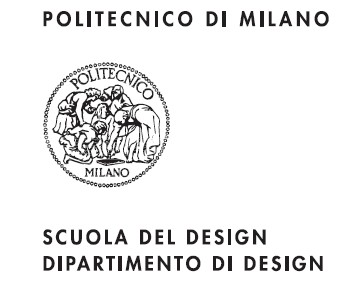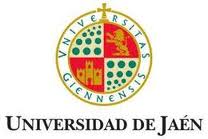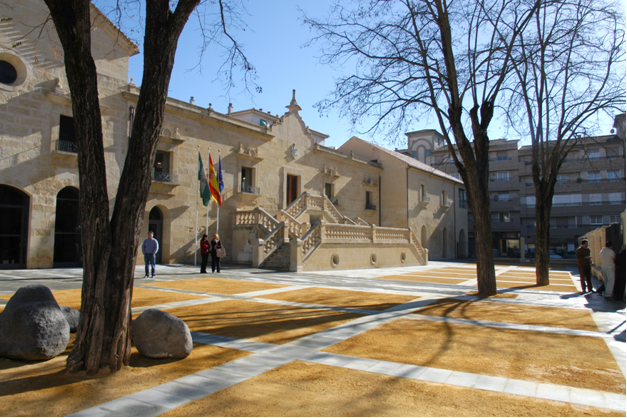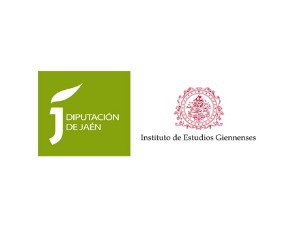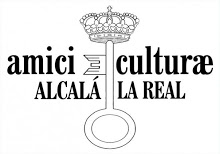Sinestesia, transmodalidad y discriminación sensorial
José María Colmenero (1), Emilio Gómez Milán (2) y María Ángeles Rodríguez Artacho (2). Universidad de Jaén(1), Universidad de Granada (2)
Investigamos si diferentes tipos de sinéstetas (sinestesia tacto espejo, grafema color, kineto-sinestesia, sinestesia tipo aura…) muestran rasgos diferenciales en empatía, rasgos de personalidad (extroversión, apertura, neuroticismo…), inteligencias múltiples y capacidad de discriminación sensorial. Nuestros datos indican que en general no muestran mayor capacidad de discriminación sensorial, pero sí muestran mayor empatía y apertura a la experiencia y un perfil particular de inteligencias múltiples con dominio de la inteligencia intrapersonal, así como correlaciones negativas entre inteligencias y empatía. Además mantienen un elevado número de sesgos cognitivos (ideaestesias) comunes a la población general, como pensar que las personas altas son más listas.
Synaesthesia in Disguise - When Synaesthetic Perceptions Are REALLY Hidden
Jasmin
Sinha. Luxembourg. synaisthesis
More than 60 different types of synaesthesia have been listed by Sean A. Day over more than two decades. Still, both research and media seem to focus very often on those synaesthesia types that can easily be described and understood. Very often, these types involve colour, which has lead to the widely spread assumption that colour-related synaesthesia types are the most common ones.
My impression is that a “black and white” approach has been applied, assuming that a synaesthetic perception can be clearly separated from everyday perception, e.g. coloured graphemes or coloured hearing or even number forms or OLP (you have it, or you don't). From a genuine synaesthetic perspective, I don't share this perspective anymore.
What if there is an overlap between everyday perceptions that are common to both synaesthetes and non-synaesthetes, and genuine synaesthetic perceptions? How can this be explored, left alone realized and described? A good example is emotional synaesthesia. How to draw the line between a “normal” perception, triggered by a “normal” emotion, and an unexpected synaesthetic perception that is “added”, so that an enhanced perception is coming into life? Where does the “normal” perception end, where does synaesthesia begin; or is there an overlap? These synaesthesia types may be deeply hidden within one's own perception realm, they may remain there unnoticed for decades, or forever.
Researchers face the usual scientific constraints: studies must be objective; there must be controls; it must be possible to reproduce the findings; and for feasibility reasons, the scope should not be too wide. So there are obvious reasons why many of the studies on synaesthesia are focusing on those colour-related synaesthesia types. Still many types remain unexplored.
Synaesthetes are usually very interested to understand their own perceptions. But in order to do so, one must be aware of them and have the right words to describe them. For deeply hidden synaesthesias, synaesthesias “in disguise”, this can be a real challenge, and we have only started to understand the tip of the iceberg. |
| Jun 12, 19:55 GMT |
|
The White Noise of Synesthesia
Lidell Simpson.
Brogaard Lab for Multisensory Research.
United States
http://www.brogaardlab.com/
The term Synesthesia is derived from the Greek words 'syn' meaning together and 'aisthesis' meaning joined sensations. It is a union of the senses where stimulation of one sensory modality leads to involuntary perception in another sensory modality.
I have congenital sensorioneural nerve with Vision to Sound synesthesia. At an early age I displayed characteristics of autism. Over time I learned to re-integrate the new world of auditory sounds on top of my experiences of synesthesia after fitted with a hearing aid. I have been deaf all my life but silence I have never known. Vision to sound synesthesia evokes the strongest response. I also have touch to sound, emotion to sound and to a lesser degree, smell and taste to sound, and body motion to sound synesthesia. In effect, of my sensory perceptions have a sound counterpart.
With audio clips I will give a detailed description of the sounds of my sensory and cognitive synesthesia evoked through vision. Over the last several years, synesthesia has been the subject of numerous documentaries and news articles. No question it was interesting but as nothing more than a quirk of a few people that gets sensationalized by the media. Today it is suggested 1 in 25 or 1 in 200 may have some form of synesthesia. Now studies are showing a greater number of synesthetes in the autistic population. Synesthetes are usually unaware that their perceptual modalities are quite different from the average person assuming everyone else experiences the world the same way. I will place emphasis on my personal experiences and of others how the medical and educational profession treated the issues surrounding synesthesia much to the detriment to the synesthetes. Despite all the effort to educate others about synesthesia, it is a subject very ignored in medical schools. Today synesthesia and autism are linked and it is imperative that the medical schools take synesthesia more seriously. My neighbor going to medical school studying to be a neurologist once told me that synesthesia was mentioned, all seven seconds of it. That was all. There is much work to do to get the message out before any further harm comes to the synesthete patient.
Tastes of London, James Wannerton. UK Synaesthesia Association
The main focus at UKSA is to promote general awareness and distribute accurate information about Synaesthesia. An effective way of achieving this is through collaborative art and science projects promoting the links between synaesthesia and creativity; therefore I always enthusiastically support any such projects.
In my presentation, I will talk about a few of my recent collaborations including an interactive taste synaesthesia exhibit held at the Victoria and Albert museum, London; A photographic project depicting the experience of taste synaesthesia; A trilogy of film shorts covering mirror-touch synaesthesia; Theatre drama productions; Synaesthesia expressed through Contemporary Dance and music; And most recently, the design and creation of a unique “Synaesthesia Garden” planned for exhibition at the prestigious Hampton Court Flower show in July.
I'm also involved in the creation of a Synaesthsia travelling Road Show giving synaesthetic artists from all disciplines the opportunity to display and promote their work. I've found that interactive installations are by far the most effective way of engaging people and connecting them to this fascinating trait.
Last year I completed a Synaesthesia Tube map of the London Underground subway system. This project has its roots in my early childhood which makes it an ideal vehicle to illustrate the cause and effect of my own synaesthesia. Today I will discuss the 49 year taste tube map project from conception to completion.
I'd also like to talk about potential future collaborations including multi-sensory marketing, and the fact that synaesthesia appears to be creeping more and more into the design process.
Versión en Español: Sabores de Londres
El enfoque principal de UKSA ( La Asociación De Sinestesia del Reino Unido) es promover y desaminar el conocimiento general y información precisa sobre sinestesia . Una manera eficaz de lograr esto es a través de proyectos de colaboración entre las artes y las ciencias que promuevan los vínculos entre la sinestesia y la creatividad, por lo tanto, siempre apoyo estos tipos de proyectos con entusiasmo .
En mi presentación, hablare de algunos de mis colaboraciones recientes: incluyendo una exposición interactiva de sinestesia gustativa que tomo lugar en el museo Victoria & Albert de Londres; un proyecto fotográfico que representa la experiencia de la sinestesia gustativa ; Una trilogía de cortometrajes que cubren mirror-touch sinestesia ; producciones de teatro; la sinestesia expresado a través de la danza contemporánea y la música; y, más recientemente, el diseño y producción de un "Jardin Sinestesica" único, previsto para la exposición prestigiosa de flores en julio de Hamptom Court.
También estoy involucrado en la creación de una exposición de arte sinestesica son planes de estar en tour por varios lugares, la cual dará artistas sinestésicas de todas las disciplinas la oportunidad de mostrar y promocionar su trabajo . He encontrado que las instalaciones interactivas son, por mucho, la forma más efectiva de involucrar a la gente y conectarlos al tema fascinante de la sinestesia.
El año pasado completé un mapa sinestesico del metro subterráneo de Londres. Este proyecto tiene sus raíces en mi primera infancia que lo convierte en un vehículo ideal para ilustrar la causa y efecto de mi propia sinestesia . En mi presentación hablare sobre el proyecto de 49 años de del mapa de tubo gustativas “taste tube map” de concepción a finalización.
También quisiera hablar colaboraciones posibles futuras: incluyendo la mercadotécnica multisensorial y el hecho de que la sinestesia parece estar apareciéndose más y más en el proceso del diseño contemporáneo.
| Synesthesia in the philosophical works of Helmuth Plessner - And what we can learn from his approach today |
| Michael |
Funk |
michael.funk.dresden@googlemail.com |
Germany |
TU Dresdem |
https://www.easychair.org/utils/wild.cgi?ws=14114359296486633659
In my paper focus is on Helmuth Plessner (1892-1985), a German philosopher who plays in fact no role in current synesthesia research. Even in The Oxford Handbook of Synesthesia (Simner & Hubbard (eds.), 2013) his name cannot be found. Emphasize of my presentation will include two perspectives: a historical introduction into his research and a problem-oriented relation to current research issues.
I am going to start with a historical sketch of his philosophical, biological and psychological research about anthropological meanings of sensory perception, perspectives, and the role of the human body in cognitive and social processes. Plessner did not focus primarily what we are used to call "genuine synesthesia" in the narrow meaning of the word. But his interests on human perception and inter-modal phenomenons in terms of unity and linking played a major in his philosophy since the early beginnings (Die Einheit der Sinne, 1923). Investigations on senses in his approach on anthropological schemes (Die Stufen des Organischen und der Mensch, 1928) have been fruitfully combined with issues of positionality, the human Leib (lived body), and bodily-organic processes of cognitive development. His philosophical approach in the 1920th has been influenced by biology and psychology as well, and lead to an outstanding combination of those research areas. I want to introduce this author to current synesthesia research, because of this specific combination of academic perspectives. Even if 1920th are "long ago", we can learn something for possible interdisciplinary options of synesthesia-research today.
In his later works, Plessner has been emphasizing more often everyday life phenomenons such as laughter, weeping, smiling, but also artistic actions such as acting or musical expressions in Anthropologie der Sinne (1970) and other smaller papers. Especially these later pieces are fruitful for synesthesia research as Plessner analyzed cross-modality in general anthropological terms with respect to cognition, bodily actions, social meanings and linking of percpetions, movements, language and emotions. In the field of philosophical anthropology he has contributed fundamental and valuable approaches on sensory perception and in a wider sense of "synesthesia" his works offer compatible perspectives for interdisciplinary synesthesia-research with respect to everyday life phenomenons.
On ten pages and one lecture it is not possible to summarize all issues of his complex works adequately. But I want to expose at least those aspects, which are most challenging for current synesthesia-research: the meaning of bodily expressions and sensory cross-modalities or intermodal analogies in everyday life; the relations between body and mind in processes of perception; and the impact of organic development and positionality which leads to perception-oriented approach of perspectivity. |
Time: Oct 31, 18:18 GMT
09. Perception and Synesthesia |
|
Getting aware of Synaesthesia; implications if there are more Synaesthetes than assumed.
It seems that many genuine synaesthetes do not perceive synaesthesia consciously because they are perceptually blind for it. Although synaesthetic perception occurs automatically, attention is not only required to the inducer but also to the synaesthetic concurrent in order to have a synaesthetic experience. Unaware synaesthetes often claim not to have synaesthesia although they are genuine synaesthetes. It appears that unaware synaesthetes need an initial aid and guidance in accessing their synaesthetic perception and discovering the full range of synaesthesia types.
I propose that there are six major factors that determine the synaesthetic awareness of a synaesthete: a) Attention: giving focus on the inducer(s) and the concurrent(s) b) Expression: putting synaesthetic perception into thoughts, words or drawings c) Social exchange: finding other synaesthetes among relatives and friends and speaking about it d) Information: Knowledge that there is a word for it, that is a scientific field and not necessarily a rare condition e) Identification: being clear on being a synaesthete f) Application: using and benefiting from their synaesthetic perception in daily life, such as learning or meditation.
This hypothesis about unaware synaesthetes among us might change the light on how we see synaesthesia today. Synaesthesia is at least partly a genetic trait. We should start thinking beyond the anthropocentric borders on this phenomenon to a more evolutionary approach. Potential advantages for animals having synaesthesia and its possible implication in the evolution of perception should be considered in the discussion.
In the context of our society today it seems worth to put effort into developing tools, techniques and processes that help to find unaware synaesthetes, facilitate them with becoming aware synaesthetes and support them in benefiting from this gift. Especially the acquisition of synaesthetic awareness and learning techniques by synaesthetic children may be beneficial for their personal development and learning success throughout their life.
When it comes to science, there is the possibility that unaware synaesthetes fail in consistency tests when not being aware of how to access synaesthetic perceptions. Ignoring this might lead to distorted data in synaesthesia research. Unaware synaesthetes might be classified falsely as non-synaesthetes. Scientists might be misled by the concept that all synaesthetes are aware of their synaesthesia as they deal mainly with synaesthetes preselected for being aware during their studies in the labs.
Unaware synaesthetes miss the opportunity to access the beauty of synaesthesia and the benefits from this gift. We should consider the possibility that synaesthesia is spread much more extensively in our society and along the evolutionary tree of live than previously assumed. Maybe it is time to change the way we see synaesthesia and how we communicate about it.
|
| Time: Nov 24, 14:10 GMT |
|
Comité Organizador/Organization Committee:

